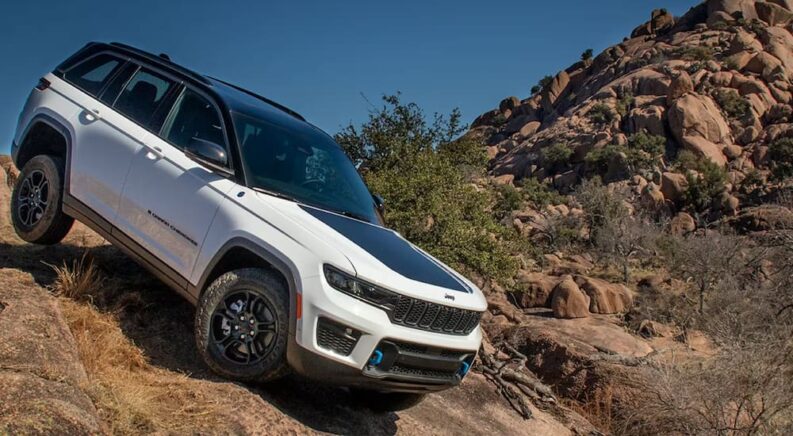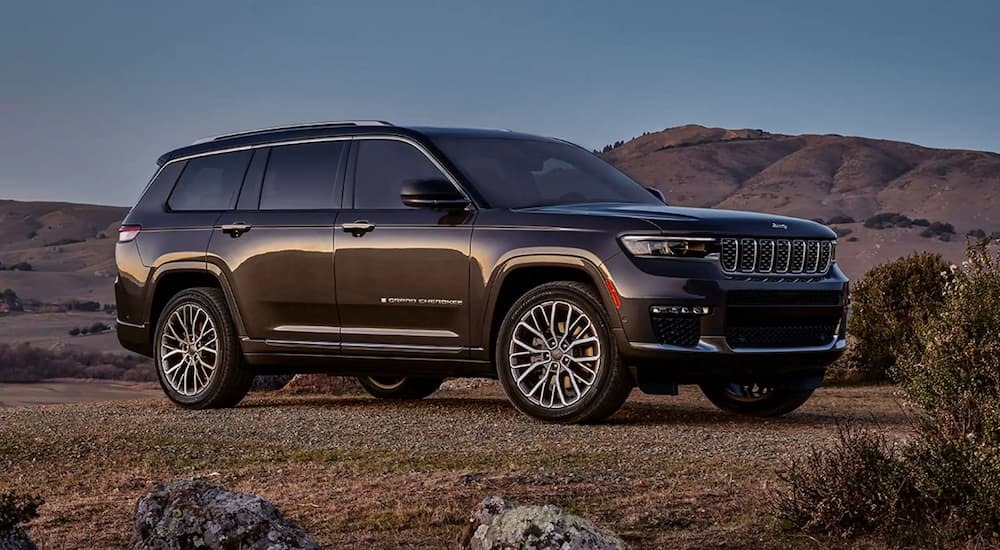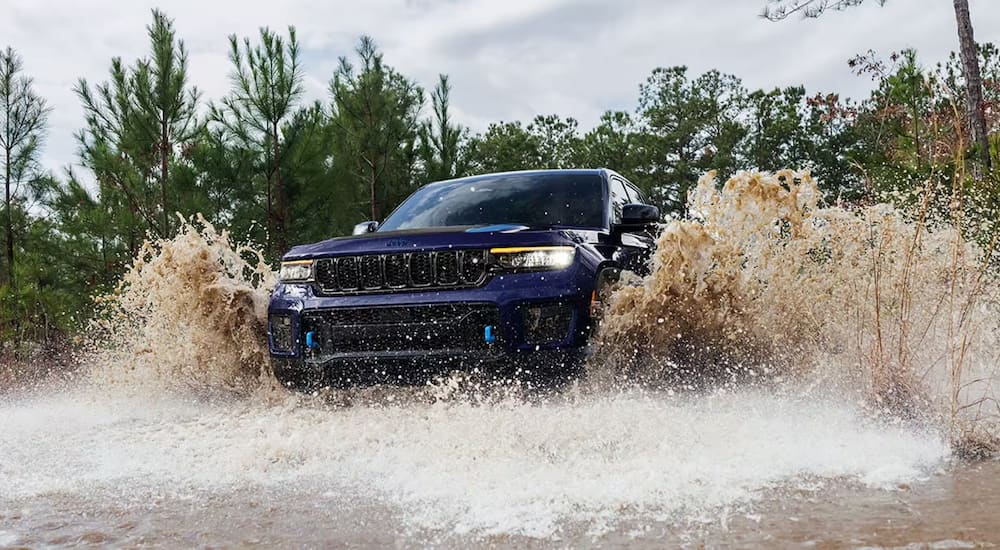Overlanding is all about abandoning the paved roads and living life off the grid, away from the city lights, the structures, and the technologies of modern society. To do this, you will need a specific type of vehicle to sustain a lifestyle far removed from all of the creature comforts provided by the current era of the information age. In North America, some of the most popular vehicles to overland with are Jeeps, for obvious reasons, and the Grand Cherokee makes a great overlander.
If Jeep has been on your radar when you’ve been thinking about buying a Jeep Grand Cherokee for sale with the sole purpose of overlanding, or if you already own a Jeep Grand Cherokee and you want to turn it into an overlanding monster, there are some things you need to get under the utility belt to make it the most efficient that it can be. This doesn’t mean every Jeep Grand Cherokee is perfect for the job at hand. However, if you didn’t intend to buy a Cherokee with overlanding in mind, there are some things you can do to make it more effective for overlanding.
Getting the Basics for Overlanding Right
There are a few Jeep Grand Cherokee trims that get you started on the right path thanks to their features. Anything above the Laredo trim in the WL generation is what you will want to eye for the four-wheel drive systems. The Laredo A, for instance, is only available in rear-wheel drive, and so that is not going to provide you with what you need for off-road travel. One of the most important elements for overlanding that you need to be sorted out is a good 4×4 system.
Unlike hardcore off-roading, you don’t need a full-time 4×4 system for overlanding. The Quadra-Trac I or Quadra-Trac II systems are good enough to get you off-road and over most basic obstacles you might encounter. You only need the 4×4 system for the traction control to avoid getting stuck or not being able to get off or onto the road again. This makes the obvious Overland, Summit, and Summit Reserve trims especially enticing since they only come in 4×4 formats and are designed specifically for off-road travel.
Two other important features are a reliable infotainment system for navigation and mud-terrain tires. The tires are necessary to get across rugged terrain that would otherwise make your journey more difficult. In terms of infotainment, the Uconnect systems that offer visual camera aids when traveling off-road via the 360-Surround and night vision capability can help you navigate off-road. Getting a better view of your surroundings in poorly lit areas or highly dense areas where visibility is limited is quite a useful feature when you can’t see what’s directly ahead of you over the hood.
Grand Cherokee vs Grand Cherokee L
If you are still in the scouting phase of buying a model, you could consider the Jeep Grand Cherokee L. It’s the longer version of the Grand Cherokee and offers a third row of seating. The highlight is larger sleeping quarters inside the back of the Jeep. Instead of using the roof or trailer for tent storage, you could sleep inside the vehicle and store more supplies on the roof or in the trailer. However, if you already have a Grand Cherokee that isn’t a Cherokee L, it’s no big deal. You can still make use of its functionality whether you have the standard or elongated model.
The Importance of Roof Rails
When building a Jeep Grand Cherokee, roof rails are one of the most important aspects of that build. All of the newer generation Grand Cherokees come standard with side rails. Side rails are great because if they’re already present you don’t have to buy them or roof racks or cross bars. You can use the side rails that are already on the Grand Cherokee to install crossbars or roof racks.
The importance of a utility-rich roof rack system for overlanding is that it gives you the option to store large cargo carriers on the roof of the vehicle and keep it secure. The Grand Cherokee’s roof slides can be upgraded with heavy-duty racks or cross bars, which can give you many more options for storage and carrying capacity, as well as survival equipment, medical supplies, repair kits, or even spare parts for the vehicle.
Trailer Tow Package Adds Tons of Options
One feature for building out your Jeep Grand Cherokee that isn’t already built into the basic trims of the Grand Cherokee is the Trailer Tow Package. This can be a costly package add-on, but it’s also a necessary one for overlanding enthusiasts. You can add the package to all of the current generation Grand Cherokee models, but even if you already own a Grand Cherokee, you can still grab the Trailer Tow Package from Mopar outlets that offer the package, which carries everything you need to tow your cargo for overlanding.
The fifth generation iteration of the Trailer Tow Package for the Jeep Grand Cherokee comes with an 18-inch steel spare wheel and full-size spare tire, a 180-amp alternator, both seven-pin and four-pin wiring harnesses, an automatic headlamp leveling system, a Class IV receiver hitch, rear load-leveling suspension, heavy-duty engine cooling, and added infotainment support with trailer zoom via the ParkView camera for attaching a trailer to the hitch. Whether you’re bringing a full living trailer with you on your journey, a small carrier with extra supplies, or towing another small vehicle or boat for your adventures, the Trailer Tow Package is an indispensable utility to have.
Off-Road Cargo Trailers for Overlanding
Having the equipment to be able to tow is one thing, but having an actual cargo trailer attached is a whole other thing. Not every trailer is designed for off-road use. If you’re planning on a lengthy sabbatical from the everyday stresses and strains of life, you’re going to need a trailer that is designed to take a beating and keep on ticking. For that, you will need an off-road cargo trailer to hitch to your Jeep Grand Cherokee. The highlight here is that the Grand Cherokee can tow up to 6,200 lbs worth of cargo.
You can easily attach a cargo trailer with a bed inside, or a cargo trailer with additional supplies and gear for camping, food, water, toiletries, clothes, or other survival supplies. The towing capacity of the Grand Cherokee is not an issue for overlanding adventures at all, especially lengthy trips away from the modern amenities provided in today’s society. However, you will need to make sure your trailer is properly equipped for the task. That means having features like indented D-rings to prevent the cables, tie-downs, or strapped-in gear stays firmly secure, and that the D-ring itself doesn’t clip, hit, or get caught on anything.
Another consideration is to make sure you have a trailer with fold-down stabilizer jacks. This makes it so you don’t have to worry about it rolling away if you’re on a hill, or in the open plains where strong winds could push the trailer away while it’s detached from the Grand Cherokee. One more consideration is power outlets and connectors in case you plan to use the trailer as a power source or connect devices inside. Finally, the trailer will need heavy duty wheels with radial off-road or mud-terrain tires. Having your Grand Cherokee capable of venturing across rough and uneven terrain is one thing, but your trailer needs to be able to follow in tow and not get stuck, tip over, or have the wheels incapable of traversing over the same kind of terrain that the Grand Cherokee can.
Accessories That Make Overlanding Easy
A few accessories you might consider for building out the efficiency of your Grand Cherokee’s overlanding capabilities include features like hard-top tent packages. This is basically a tent on the roof of your Grand Cherokee that you can use as a mobile sleeping quarters. The cheaper ones provide basic sleeping amenities, but paying a bit more can get you one that includes a portable shower. Your budget and survival intentions will determine whether this is a better option than sleeping in a cargo trailer, or inside the Grand Cherokee itself.
If you need power for lights, recording equipment, a satellite phone, or navigation equipment, having a portable generator on hand is extremely important, too. A portable power station that can also be charged from the car’s battery or solar panels is useful, but a gas generator is more reliable. However, the power stations are smaller and easier to store, so having a couple of them might be a consideration if space is an issue.
Lighting is also an important thing to consider, especially for keeping unwanted animals or visitors from approaching the vehicle at night. Baja lights are a common accessory to add to the Grand Cherokee, and you can get them in a nice bundle package, too. As mentioned above, if you want a good set of roof lights for your Grand Cherokee you will need a stable roof rack installed. Alternatively, you can install bull bars and mount lights to the bull bars, which are useful both for protecting the front fascia of the Grand Cherokee and providing you with extra utility. For fifth-generation WL models, make sure you get bull bars that accommodate openings for the front tow hooks, which are vital if you need to move debris out of your path or help tow another vehicle out of a precarious position.
Now You’re Ready for Overlanding in Your Grand Cherokee
With all of the basics covered, you’re ready to take your Grand Cherokee out into the wilderness and overland to your heart’s content. It’s worth keeping in mind that you will likely want to replace the standard all-terrain tires with large mud-terrain tires, as they are less likely to puncture or split while off-road. Having a puncture repair kit on hand is a no-brainer as well. Thanks to the suspension and tuning of the Grand Cherokee 4×4 models, you have a durable and rugged vehicle to tackle overlanding. Hence, the Cherokee makes for a great base for building out an impressive and versatile overlanding machine.






